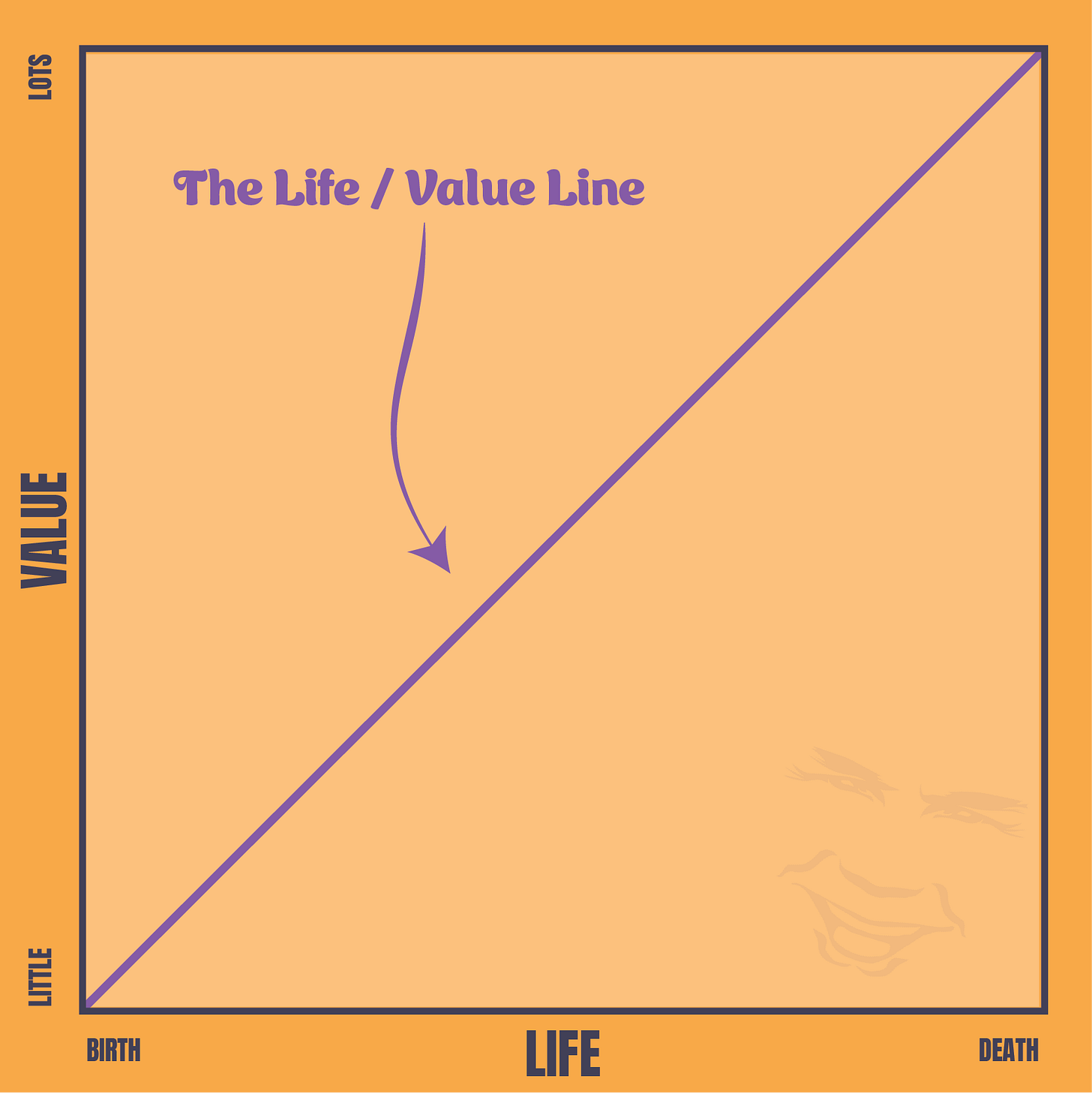LIFE IS FINITE
If this isn’t something you are aware of, it is best you hear it now: you are going to die. Not to be too much of a buzz-kill, but it is true. This life is finite.
Hate to tell you this, but you are going to die. I know! You’re all like “Dude! I thought this was about happiness?”
It is. Trust me.
We are blessed with a life long enough to think it will never end and cursed with a life short enough to wish we had much more of it. That dichotomy can mess with our brains. So, perhaps now would be a good time to discuss the laws of supply and demand. Sounds weird, but (again) trust me.
There are four basic laws of supply and demand:
When supply goes up, value goes down.
When supply goes down, value goes up.
When demand goes up, values go up.
When demand goes down, values go down.
Not only do these laws work for crude oil and toilet paper, they can be applied to your life as well. (Neat!) It is because life is finite that life has value (Rule #1). If we didn’t die, supply would be infinite, demand would be irrelevant and value would decrease to zero. If we didn’t die, life would be worthless.
So, YAY for death!
Life follows rule #2 specifically: When supply decreases, value goes up. Because you are going to die, as you age, the supply of life goes down. We can assume your demand for life remains fairly stable - you either have a zest for life or maybe… not so much. Your demand for life may fluctuate somewhat from day to day (or year to year), but compared to the unrelenting march of time, you more than likely maintain a consistent level of demand throughout your life.
Life/Value
Because life is finite and demand is relatively stable, we can graph the value of life through time. It looks a little something like this:
The X axis is your life from birth to death. Wherever you are on this axis, to the right of your age is the future (i.e supply), and to the left is the past.
The Y axis is the value of your life from “not much” to “a lot”.
When we graph the value of life as we age we get a nice 45 degree line from the lower left (birth / not much) up to the upper right (death / a lot).
We can see how this plays out in different stages of life.
You can see in the first graph that, when we are young, we have a huge supply of life. So much that we don’t place much value on it. When we’re 3 years old we don’t give much thought to the supply of life. Heck, even when we get into our 20s we still think life goes on forever.
Contrast that with the second graph of when we are older and we know that our supply of life is shrinking. Life has a LOT more value at this stage of the game.
Life/Value Phenomena
There are some fascinating things to consider when tracking life to value like this. Regardless of where you find yourself on this graph, the same phenomena apply. Let’s take a random example to explore some of these:
This isn’t random at all. This is me (or people of a similar age). I am a little past middle age - although I firmly believe that I will live to be 150 years old, we're going to go with averages here. Anyway… I have a good bit of life behind me and still an ample chunk of life ahead of me. Middle age is a good place to put this, because these weird phenomena start to come into focus around here (mid-life crisis, anyone?).
One thing that happens to all of us is that, although value has been increasing throughout our lives, we tend to value the past at our current Life/Value.
We let our past Life/Value line drift up to our present value. This manifests itself by romanticizing the past. When people start talking about how much better the past was, they are fooling themselves, they are just (wrongly) valuing it differently. We find ourselves telling the youths, “enjoy it now, you have no idea how good you have it.” Actually they do (you did at their age, too). They are enjoying their lives at their Life/Value. Hopeful they are enjoying it up to their max level, but it would be impossible for them to live it up to yours. They have to live longer to get there.
Similarly, we do the same thing to the future.
We take our future Life/Value line (the one we haven’t lived yet) and pull it down to our present value. We then (incorrectly) assume that life will not gain value beyond what we have now. This results in thinking that the future is going to suck, that this is as good as it gets.
That could not be any further from reality. The laws of supply and demand prove otherwise.
These two interlaced phenomena are put on display in a recent YouGov poll, When asked “What are the best years of your life,” the majority of respondents believe it is their current age, or somewhere in the past (I am heartened that 30-40 year olds tend to think positively of the future). The truth is you will place more value on your life as you grow older. Your best years are ahead of you. And, perhaps more importantly, you are currently experiencing the highest value you have ever placed on your life.
This moment is priceless. Enjoy it.









